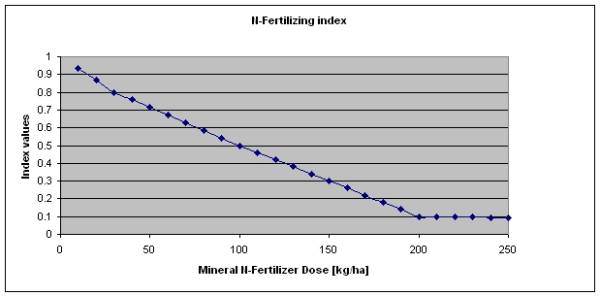Agricultural land use and environmental indicators at 1x1 km grid resolution- High Nature Farmland index
Main Contributors: Maria-Lusia Parrachini, Phillippe Pointereau, Wolfgang Britz
 Intermediate results for Poland
Intermediate results for Poland
The High Nature Farmland index tries to espress in one single number the “nature likeness” of farming practises. High index values indicate a rich crop rotation or a high share of grass land combined with a low intensity of farming, generally assumed to be beneficial for the environment, by allowing for high bio-diversity and reducing harmful impacts on the environment. The preliminary index, still in development, is the built from the following elements:
- Arable crop index
- The arable crop index takes into accound firstly a slightly modified Shannon index measuring the diversity of shares of annual crops.. The modification ensures index values between 0 and 1. High index values (close to 1) indicate a combination of small shares of many crops. The index drops if the number of the crops is reduced, or the rotation is dominated by large share of a few crops. It takes on the value zero in case of monoculture. The second part of the index is based on the average mineral nitrogen fertilization application in kg/ha. It is defined to be close to 1 with doses at or or below 20 kg per ha and drops non-linearly to zero for doses for 200 kg per ha or above. The overall index for the arable crop part is derived by multiplying the two index elements.

- Permanent crop index
- The permanent crop index uses only the mineral nitrogen fertilizer dose to define a sub-index between 0 and 1 as explained for the arable crops.
- Grass land index
The overall index is derived by adding the three sub-indices (arable, permanent, grass land), weigthed with their share on total agricultural area. The methodology is based on a study conducted by Philippe Pointerau from Solagro, Toulouse, France.




